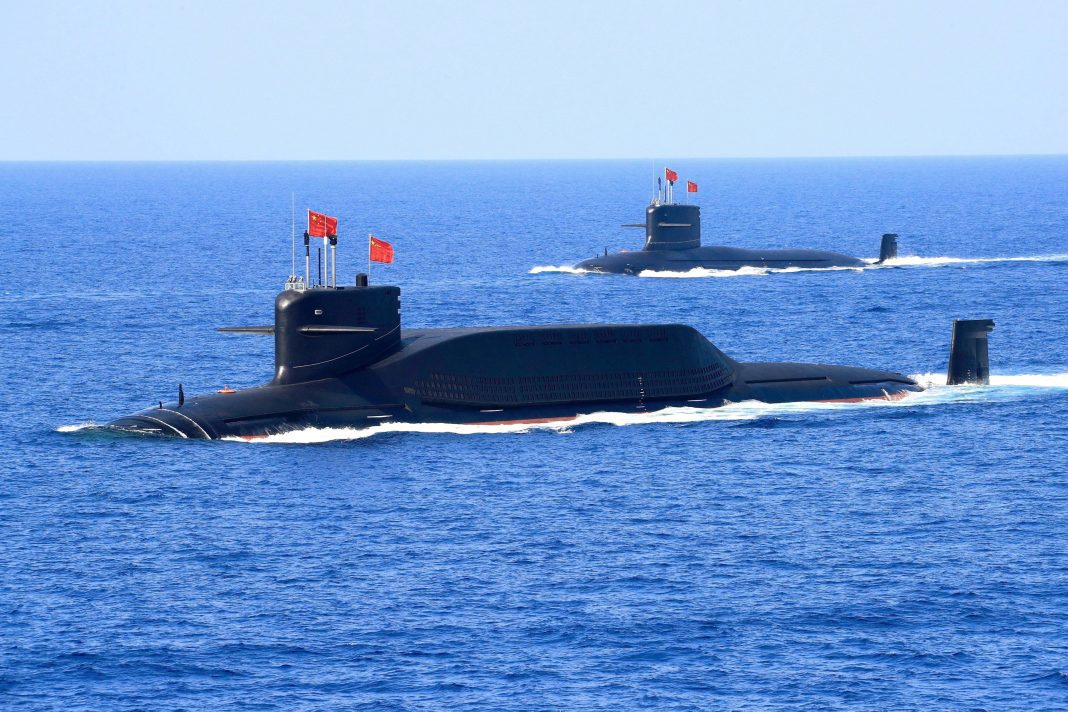China has recently moved two of the world’s largest uncrewed submarines to the South China Sea. These new underwater drones are so big that they dwarf even the largest Western designs. At over 40 meters in length, they are many times larger than the U.S. Navy’s Orca XLUUV (extra-large uncrewed underwater vehicle), making the American drones appear tiny by comparison.
Massive Underwater Drones Deployed in South China Se
The submarines were quietly transferred to the waters around Hainan Island in the South China Sea. Both are being temporarily based at Gangmen Harbour, located west of Sanya, a major Chinese naval base. This area is already known for hosting nuclear submarines, aircraft carriers, and other extra-large underwater vehicles.
Unlike smaller underwater drones, these massive vessels are not lifted in and out of the water by crane. Instead, they are kept on two special floating docks. These docks allow the submarines to be launched into the South China Sea without interfering with normal port operations. The docks also help conceal the submarines from public view and satellite monitoring. One of the docks, named Zhuan Yong Fu Chuan Wu 001 (Special Floating Dock 001), was built in 2024 and launched by CSSC Guangxi Shipyard. It has been transporting the submarines for trials in Hainan since January.
New Class of Uncrewed Submarine Tested in South China Sea
Experts believe that these enormous drones represent a new category of uncrewed submarine. The term XLUUV, which stands for “extra-large uncrewed underwater vehicle,” may no longer accurately describe them due to their unprecedented size. Some analysts are calling them XXLUUVs, or ultra-large uncrewed submarines.
Their size suggests they are capable of far more than conventional XLUUVs. A normal crewed submarine of similar dimensions can carry about eight heavy torpedoes. Without the need to house a crew, these XXL submarines could potentially carry even more weapons or additional equipment. Their roles are likely to include more complex military operations in the South China Sea.
Philippines Arrests 5 More Chinese Spies in Escalating South China Sea Dispute
Satellite images indicate that the submarines are around 40–42 meters long. They do not have traditional submarine sails and feature X-shaped rudders at the stern. Evidence suggests that one of the vessels was developed by China Shipbuilding Industry Corporation’s 705 Research Institute, a known center for advanced weapons development.
While the exact propulsion systems remain unclear, the use of floating docks suggests they do not rely on sensitive fuels such as liquid oxygen. They could use large diesel generators or lithium-based batteries. Speculation about nuclear propulsion exists, but there is currently no evidence to support it.
The submarines are also expected to have advanced sensor systems. Without a human crew onboard, they will rely heavily on artificial intelligence to process sonar and other data. Their large size allows for more powerful sonar and potentially greater detection capabilities than smaller uncrewed vehicles.
Implications of the Deployment
China’s deployment of these super-sized uncrewed submarines represents a significant development in naval technology. The move shows that the country is willing to test new platforms in strategic areas such as the South China Sea.
The use of floating docks for launching and retrieving these massive vessels highlights the complexity and sophistication of the program. It allows the submarines to operate away from crowded ports and reduces the risk of exposure to monitoring by other countries. The presence of two XXL submarines operating together also indicates that China is exploring coordinated operations involving multiple uncrewed submarines in the South China Sea.
U.S. destroyer in the crosshairs — Scarborough Shoal turns into latest South China Sea flashpoint
The deployment adds to China’s existing fleet of uncrewed and crewed underwater vehicles. The country has been building a range of XLUUVs similar to Western models but appears to be moving faster in weaponizing and scaling them. These XXL submarines, given their size and capability, could carry larger payloads and perform more complex missions than previous uncrewed designs.
This move underscores the rapid evolution of China’s naval strategy and technological capabilities in underwater warfare. The super-sized submarines at Hainan are part of ongoing trials in the South China Sea, and their activities have so far been carefully concealed from public view.

